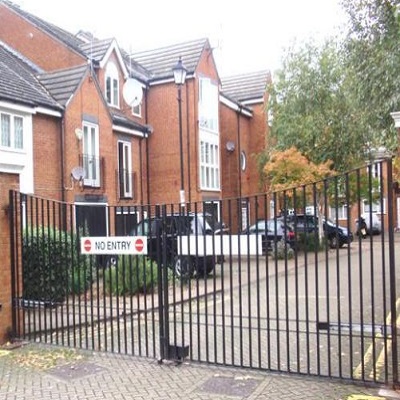
Brixton, Bow and Isle of Dogs used to be known for high crime rates and poverty, but thanks to the wonders of gentrification their reputation has changed.
Part of this is thanks to gated communities - clusters of luxury flats behind shiny metal gates. The idea of gated communities harks back to the Middle Ages, when walls were put up for protection against enemy attack. Every major city was built within four defensive barriers, which marked territory and also represented the status of the population living within.
Skip forward to today - Bow Quarter in Tower Hamlets, the second poorest borough in London, has 750 flats walled off from the surrounding streets, with security guards standing vigil 24 hours a day, 365 days a year, and CCTV cameras in operation throughout. It boasts its own gym, swimming pool, supermarket, bar and restaurant.
The flats are aimed at young professionals, and politicians state there are altruistic motives behind attracting wealthier residents to areas considered deprived by creating an equal mix of low and middle income households living together in harmony. But when there is no need for the inhabitants to go as far as the local corner shop, how beneficial can this really be to the local economy?
Gates are also a useful tool when it comes to bumping up house prices. Adding one to a former council estate and then selling the flats privately is fantastic news for estate agents, but not so much for those on low incomes or wanting to get onto the property ladder.
Does London need gate communities? Would you prefer to live in a secure gated complex rather than a ‘normal’ street? Let us know on one of our social media accounts.


